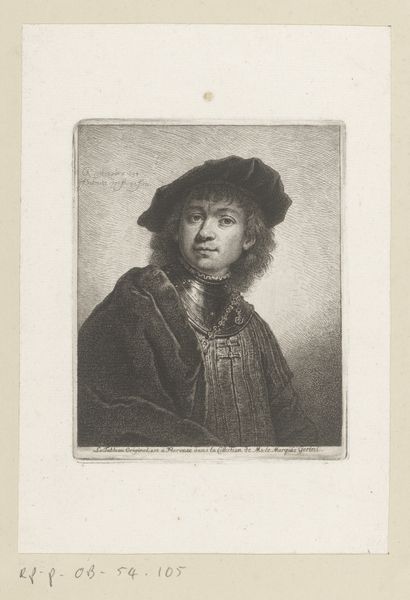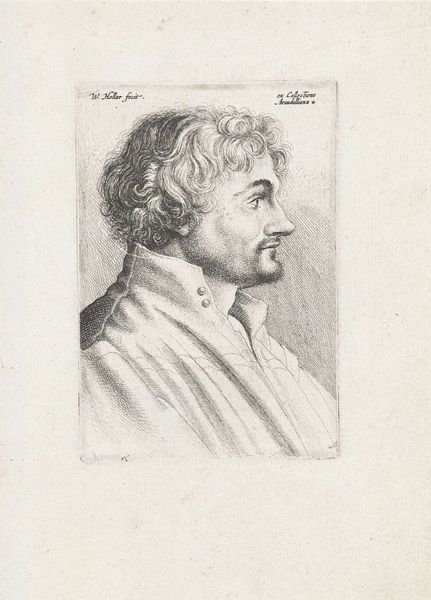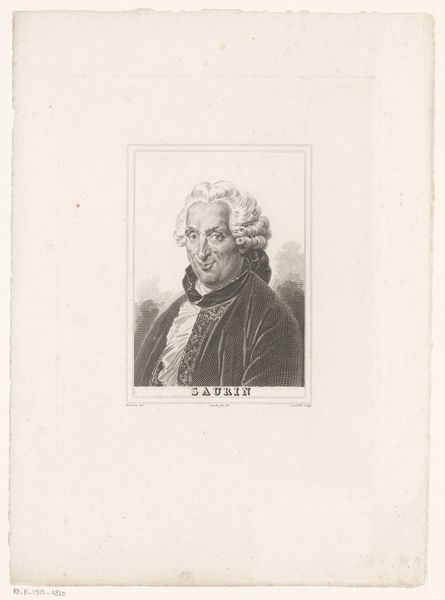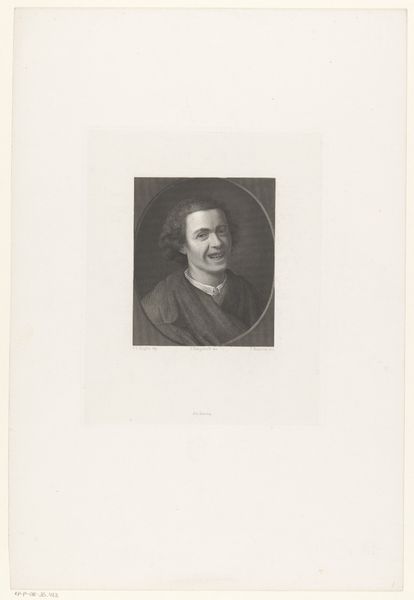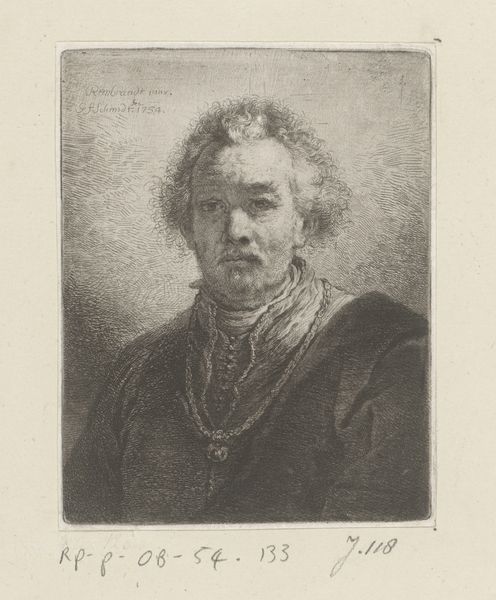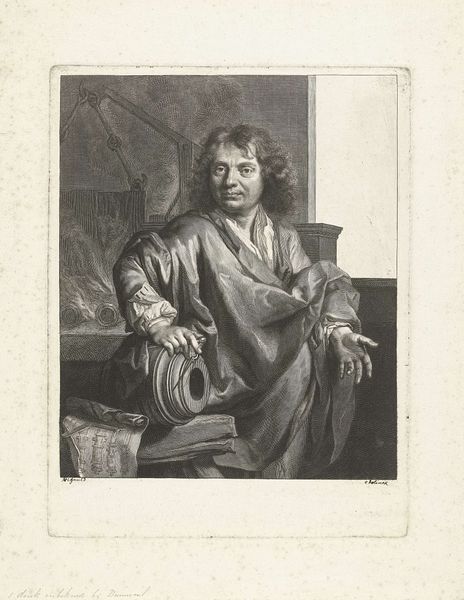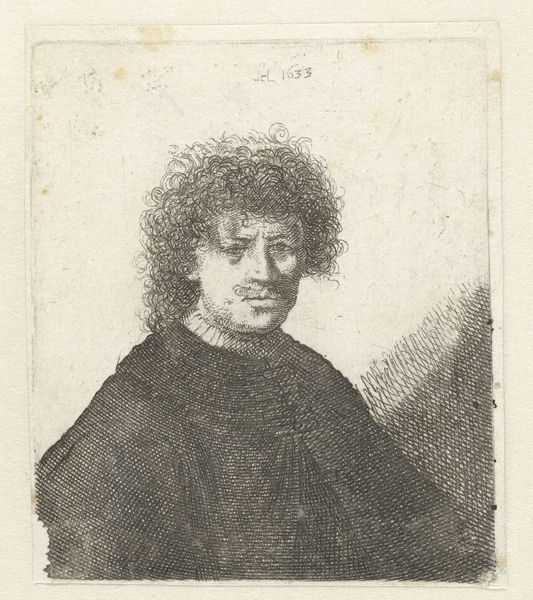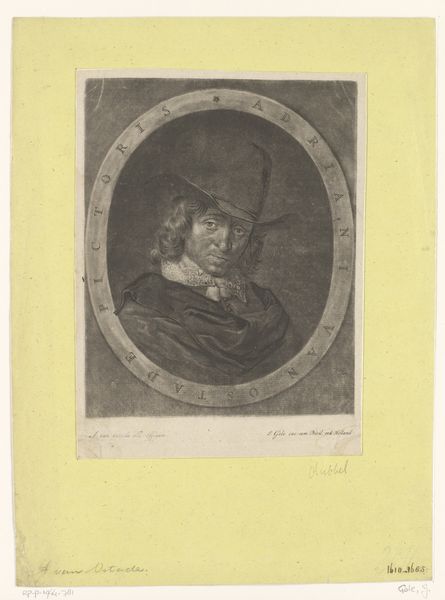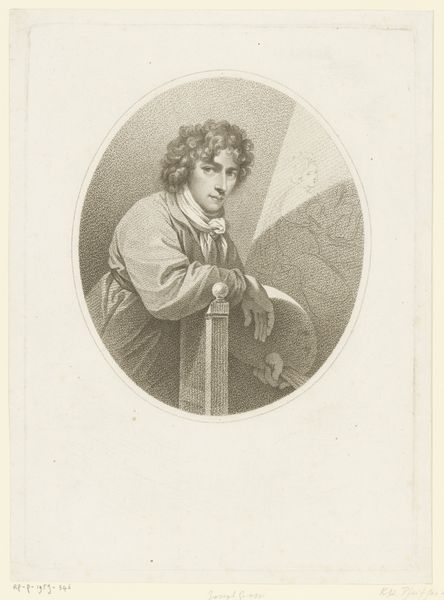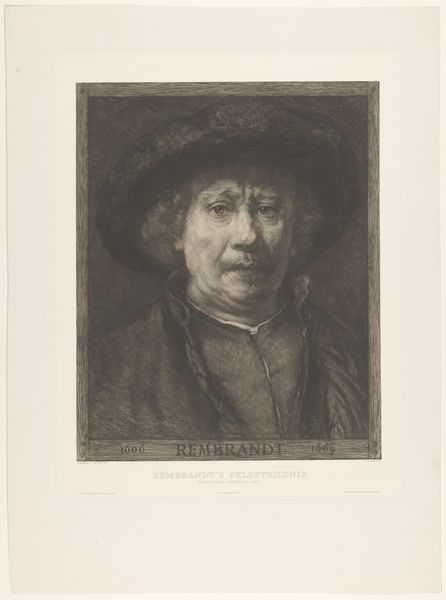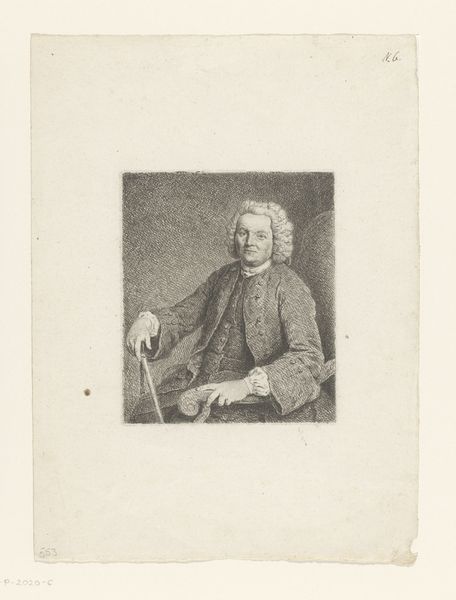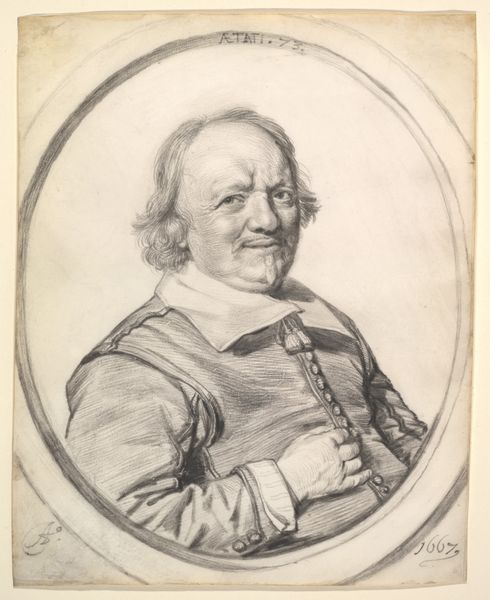
print, engraving
#
portrait
# print
#
genre-painting
#
engraving
#
realism
Dimensions: height 246 mm, width 180 mm
Copyright: Rijks Museum: Open Domain
Curator: Up next, we have “Laughing Man” by Lambertus Antonius Claessens, likely created sometime between 1829 and 1834. The work is an engraving. What are your first thoughts? Editor: It's the slightly unsettling quality of the grin, isn’t it? The eyes don’t quite match the mouth’s expression. It's formally interesting because the values range from the subtle gradients of light on his face to the strong, dark areas of his costume. Curator: It’s fascinating to consider Claessens’ role as the engraver, reproducing a work initially by someone else, presumably from painting. This collaborative aspect highlights the labor involved in distributing imagery at the time and the engraver as a vital interpreter of artworks for a wider audience. We see it referenced by the text on the artwork "LE RIEUR." Editor: Precisely, and if we closely examine the hatching and cross-hatching, there's an inherent sense of texture, both of the metal plate used and of the clothes he is wearing, which contributes to the form’s dimensionality. The realism he’s going for seems rooted in how one is perceived, rather than their emotional state. Curator: His costume indicates some social standing, of course, but given it is a “genre painting”, what narratives do the engraver tap into? How might prints like this have been received within various socio-economic groups, with its themes so clearly oriented toward ordinary life rather than history painting or portraiture? Editor: It invites one to consider psychological depth. He looks a little wild but contained. See the use of light, which enhances both the details in the armor and the nuances of the face. This contrast creates a focal point and adds a sense of drama to a commoner’s portrait. Curator: Agreed. These portraits, circulated through printmaking, challenge the traditional hierarchy of art and bring everyday faces into circulation. Editor: The subject seems both familiar and somehow unknowable. A paradox conveyed formally. Curator: Thinking about this "unknowable" side, I appreciate your reminder about how context shifts our understanding of material realities and how form enables a narrative. Editor: Exactly. Considering these elements enriches how we view art of the era.
Comments
No comments
Be the first to comment and join the conversation on the ultimate creative platform.
